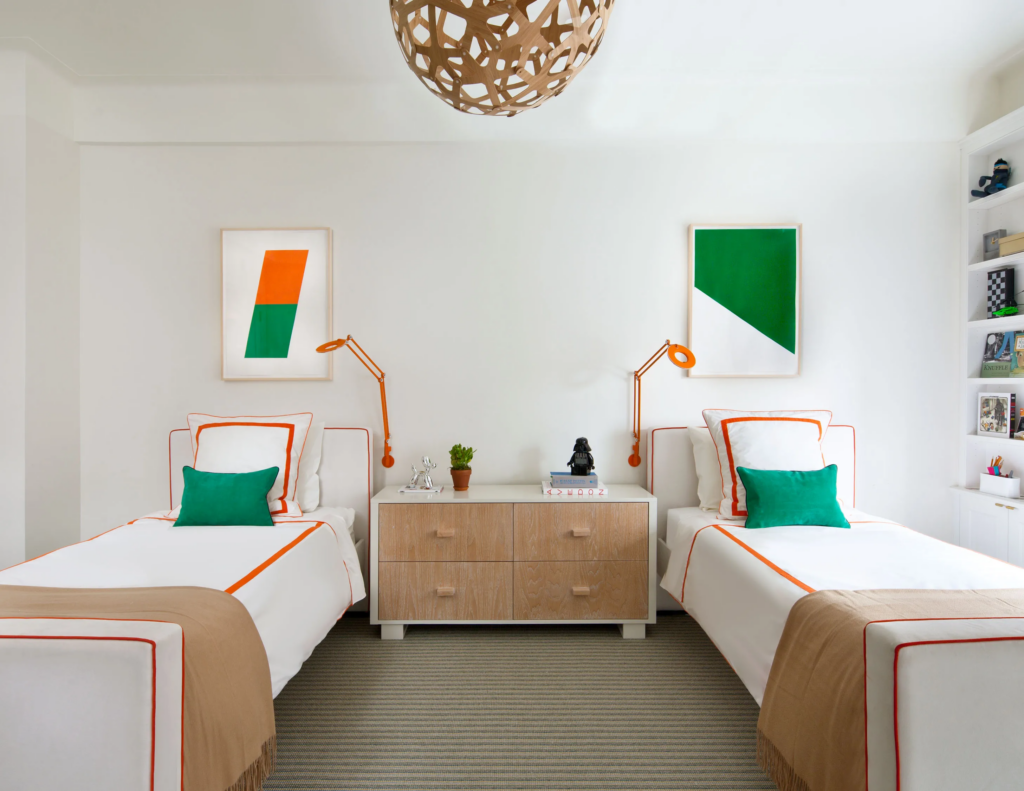Designing a child’s bedroom is a significant milestone for new parents. Unlike simply adding a cradle to the master bedroom, a well-planned kids’ room fosters growth, creativity, and independence. With thoughtful design choices, you can create a space that evolves with your child while ensuring functionality, safety, and aesthetic appeal.
The Purpose of a Kids’ Room
A child’s bedroom serves multiple functions—it is a space for rest, play, and learning. Beyond just storing toys and clothes, it plays a crucial role in shaping a child’s personality and habits. A well-designed room encourages responsibility, organization, and self-confidence.
Essential Furniture for a Well-Designed Kids’ Room
When planning your child’s bedroom, consider versatile, space-saving furniture that meets their immediate and future needs.
- Comfortable Bed with Storage – Choose a sturdy kids’ bed with storage to keep toys and essentials organized.
- Functional Wardrobe – A well-organized modular wardrobe keeps the room tidy and maximizes storage.
- Dedicated Study Corner – Incorporating a study table for kids fosters early learning habits. If space is limited, opt for a wardrobe with a built-in study pull-out.
- Window Bay Seating with Storage – A cozy nook for reading or bonding time, with additional storage underneath.
Choosing the Right Colors and Themes

The right color palette enhances a child’s mood and creativity. Consider these options:
- Vibrant Colors – Bright hues create an energetic and lively ambiance.
- Eco-Friendly, Washable Paint – Safe for children and easy to maintain. Check out eco-friendly paints for safer alternatives.
- Chalkboard Wall Paint – Encourages creativity while keeping walls clean.
- Thematic Wallpapers – A cost-effective and flexible way to personalize the space.
Safety Considerations for a Child-Friendly Environment
Safety is paramount when designing a kids’ room. Key considerations include:
- Rounded Furniture Edges – Prevents injuries from sharp corners.
- Cushioned Upholstery – Adds comfort and an extra layer of safety.
- Wall-Mounted Storage – Keeps books and decorative items out of reach, freeing up floor space for play.
Sustainable and Long-Term Design Elements
A child’s needs evolve over time, making sustainability a crucial aspect of interior design. Future-proof the space with:
- Ample Storage Solutions – A mix of drawers, cabinets, and hidden compartments ensures long-term organization.
- Activity Corner – Encourages physical activity and creativity.
- High-Quality Bed – Investing in a durable kids’ bed ensures years of comfort.
Final Thoughts
Designing a child’s room is more than just an aesthetic choice—it is an investment in their comfort, growth, and well-being. By incorporating functional, safe, and adaptable elements, you can create a space that supports your child’s development at every stage.
Also Read : Stylish and Functional: 10 Stunning Living Room Almirah Designs to Elevate Your Space